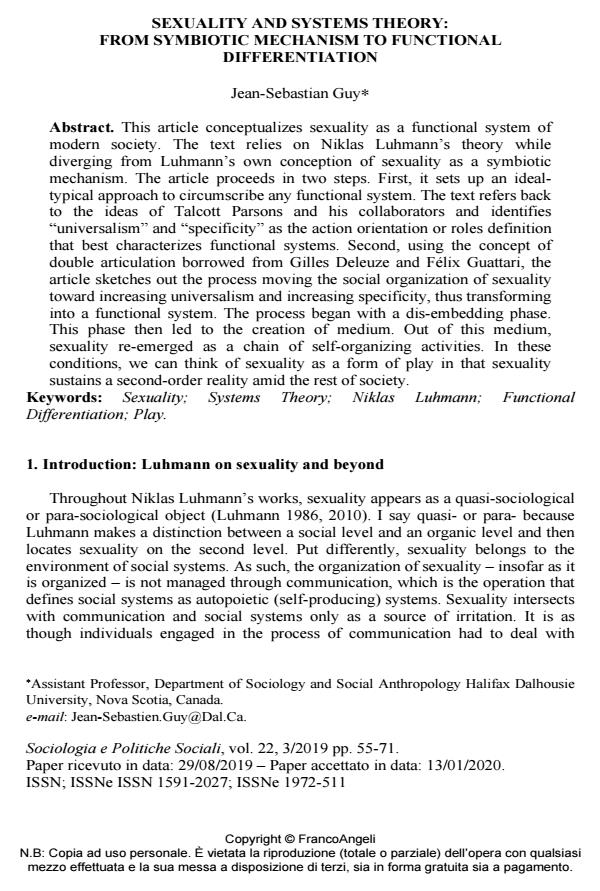Sexuality and systems theory: from symbiotic mechanism to functional differentiation
Titolo Rivista SOCIOLOGIA E POLITICHE SOCIALI
Autori/Curatori Jean-Sebastian Guy
Anno di pubblicazione 2020 Fascicolo 2019/3
Lingua Italiano Numero pagine 17 P. 55-71 Dimensione file 232 KB
DOI 10.3280/SP2019-003003
Il DOI è il codice a barre della proprietà intellettuale: per saperne di più
clicca qui
Qui sotto puoi vedere in anteprima la prima pagina di questo articolo.
Se questo articolo ti interessa, lo puoi acquistare (e scaricare in formato pdf) seguendo le facili indicazioni per acquistare il download credit. Acquista Download Credits per scaricare questo Articolo in formato PDF

FrancoAngeli è membro della Publishers International Linking Association, Inc (PILA)associazione indipendente e non profit per facilitare (attraverso i servizi tecnologici implementati da CrossRef.org) l’accesso degli studiosi ai contenuti digitali nelle pubblicazioni professionali e scientifiche
This article conceptualizes sexuality as a functional system of modern society. The text relies on Niklas Luhmann’s theory while diverging from Luhmann’s own conception of sexuality as a symbiotic mechanism. The article proceeds in two steps. First, it sets up an ideal-typical approach to circumscribe any functional system. The text refers back to the ideas of Talcott Parsons and his collaborators and identifies "universalism" and "specificity" as the action orientation or roles definition that best characterizes functional systems. Second, using the concept of double articulation borrowed from Gilles Deleuze and Félix Guattari, the article sketches out the process moving the social organization of sexuality toward increasing universalism and increasing specificity, thus transforming into a functional system. The process began with a dis-embedding phase. This phase then led to the creation of medium. Out of this medium, sexuality re-emerged as a chain of self-organizing activities. In these conditions, we can think of sexuality as a form of play in that sexuality sustains a second-order reality amid the rest of society.
Parole chiave:Sexuality; Systems Theory; Niklas Luhmann; Functional Differentiation; Play.
Jean-Sebastian Guy, Sexuality and systems theory: from symbiotic mechanism to functional differentiation in "SOCIOLOGIA E POLITICHE SOCIALI" 3/2019, pp 55-71, DOI: 10.3280/SP2019-003003